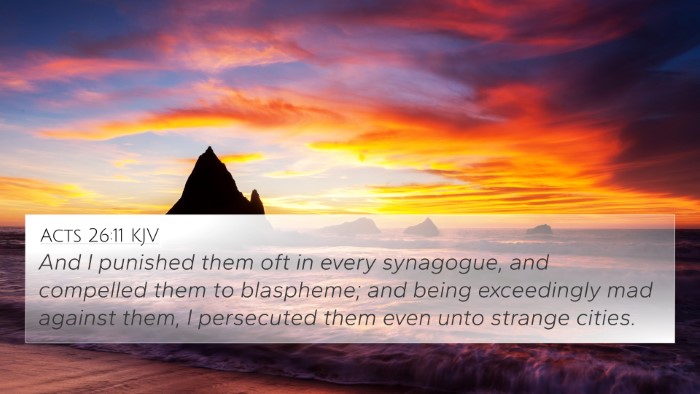Understanding Luke 6:11
In Luke 6:11, the text reads: "But they were filled with fury and discussed with one another what they might do to Jesus." This verse represents a climax of hostility from the religious leaders against Jesus. Below, we provide a comprehensive analysis of this passage, incorporating insights from esteemed public domain commentaries, while also highlighting related verses and themes.
Context and Background
Luke 6:11 is situated within the broader narrative of Jesus’ ministry, where He faced increasing opposition from the Pharisees and other religious leaders. This hostility primarily stems from Jesus’ radical teachings and miracles, which challenged existing religious norms. The escalating tension in this chapter portrays the growing animosity towards Jesus and sets stage for His eventual crucifixion.
Commentary Insights
Below are insights combined from Matthew Henry, Albert Barnes, and Adam Clarke.
- Matthew Henry: He emphasizes the irrationality of the religious leaders' anger. Instead of being impressed by Jesus’ miracles and teachings, they are consumed with envy and want to plot against Him. Henry notes that this reaction showcases the spiritual blindness prevalent among those who resisted true righteousness.
- Albert Barnes: Barnes points out the significance of their fury. He suggests that their rage stems from fear of losing their influence and authority over the people. They see Jesus not just as a challenge but as a threat to their entire religious system.
- Adam Clarke: Clarke adds that the conversation among the Pharisees was fueled by their hardness of heart and unwillingness to accept Jesus as the Messiah. He highlights how their discussions reflected inner moral corruption and led them towards further conspiracies against Jesus.
Thematic Connections
This passage can be connected to several key biblical themes, including:
- Opposition to Righteousness: The leaders' fury reflects a common theme throughout the Gospels where righteousness faces fierce opposition.
- Divine Authority vs. Human Authority: Jesus represents divine truth, while the Pharisees symbolize human traditions that often oppose God's will.
- The Nature of Anger: The emotional response of the Pharisees serves as a warning against allowing anger to consume one's heart and actions.
Cross-References
Luke 6:11 resonates with various other biblical passages, enhancing our understanding through cross-references. Some relevant verses include:
- Matthew 12:14: Similar to Luke 6:11, this passage depicts the Pharisees plotting against Jesus after He healed on the Sabbath.
- Mark 3:6: This verse parallels the theme of opposition, reiterating the hostility faced by Jesus from religious authorities.
- John 11:53: Here, the Jewish leaders decide to put Jesus to death, showing the culmination of their schemes.
- Acts 4:5-7: The hostility towards Jesus leads to persecutions against His followers, demonstrating the continuity of opposition.
- Romans 1:18: The passage discusses the suppression of truth by unrighteousness, akin to the leaders' refusal to acknowledge Jesus' divine mission.
- 1 Peter 2:8: This verse describes Jesus as a stone of stumbling for those who disobey, comparable to the Pharisees' reaction.
- Hebrews 10:29: The seriousness of rejecting Christ and the consequences of such actions resonate deeply within the context of Luke 6:11.
Conclusion
Luke 6:11 serves not only as a historical account of the growing antagonism towards Jesus but also as a reflective piece on the effects of envy, fear, and a hardened heart. The insights from commentaries alongside related verses provide a richer tapestry of understanding about the conflict between Jesus and the religious leaders. By exploring these connections, one gains a deeper insight into the overarching narrative of the Gospel and the persistent themes of truth, righteousness, and opposition.
Further Study Opportunities
To delve deeper into the connections and insights provided in this analysis, consider utilizing:
- Bible Concordance: A tool that helps find verses that relate to specific themes or concepts.
- Bible Cross-Reference Guide: A resource for identifying parallels and connections between various scriptures, enhancing comparative Bible verse analysis.
- Cross-Reference Bible Study: Methods for integrating scripture links into your personal study, providing thematic connections.














